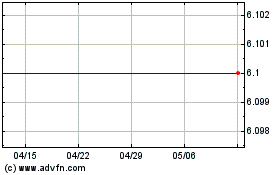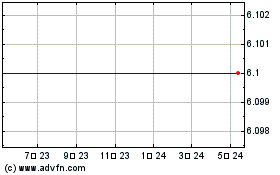Santander Bond Move Unnerves Bank-Debt Investors
2019年2月13日 - 5:00AM
Dow Jones News
By Akane Otani and Georgi Kantchev
Spanish lender Banco Santander SA said Tuesday it wouldn't
redeem a risky kind of bank debt, a move that analysts said could
ripple across a largely untested corner of the bond market.
The bank's decision not to "call" the EUR1.5 billion ($1.33
billion) bond to investors is believed to be the first of its kind
in the so-called additional tier 1 bond market. AT1 debt is
considered particularly risky because it has a perpetual maturity
-- leaving issuers free not to ever repay bondholders.
But until Tuesday, issuers had always redeemed the securities as
a courtesy to investors seeking the option to sell some of the
debt. And the category of debt has attracted investors because it
tends to pay higher interest than other types of bank bonds.
Michael Strachan, director of media and financial communications
at Santander, said the bank had made the decision after balancing
"the interests of all investors." In an email, Mr. Strachan added
that the bank would "continue to monitor the market closely and
will seek to exercise call options where we believe it is right to
do so."
By not redeeming the bonds, Santander will end up paying a lower
coupon on the debt, 5.54%, than it would by issuing new bonds. The
bank issued a dollar-denominated AT1 this week at 7.5%, for
instance.
Santander bond prices slipped Tuesday, with AT1s due March 12
last trading at a cash price of 97.63, down from 98.42 Monday and
98.87 Friday, according to Refinitiv.
Analysts cautioned that the move could put pressure on other AT1
debt.
"This is a big surprise, the first time a major bank has not
called AT1 securities," said Tom Kinmonth, fixed-income strategist
at ABN Amro Bank. "It's a sign that the rest of the market may need
to reprice them."
Mr. Kinmonth also warned that Santander's decision could make
investors more reluctant to scoop up other AT1 issuances in the
future.
"This will impact banks across Europe. This type of debt will
now cost banks more money," he said.
In postfinancial-crisis Europe, the bonds took off as regulators
required banks to rebuild their capital buffers. Such bonds --
which, according to ABN Amro Bank, are valued at about EUR125
billion in the European banking sector -- offered a way for banks
to do this without selling new stock and diluting shareholders. And
if things went wrong, investors were on the hook.
It isn't the first time the bonds have taken a hit. In 2016, a
selloff in European lenders spread to such contingent convertible
bonds, or CoCos. At the time, concerns that Deutsche Bank AG might
not be able to meet the interest payments on its CoCos sent these
securities tumbling across the board. In the end, Deutsche Bank
released a statement confirming it would be able to cover the
coupon payments.
Write to Akane Otani at akane.otani@wsj.com and Georgi Kantchev
at georgi.kantchev@wsj.com
(END) Dow Jones Newswires
February 12, 2019 14:45 ET (19:45 GMT)
Copyright (c) 2019 Dow Jones & Company, Inc.
Banco Santander (NYSE:STD)
過去 株価チャート
から 5 2024 まで 6 2024

Banco Santander (NYSE:STD)
過去 株価チャート
から 6 2023 まで 6 2024
